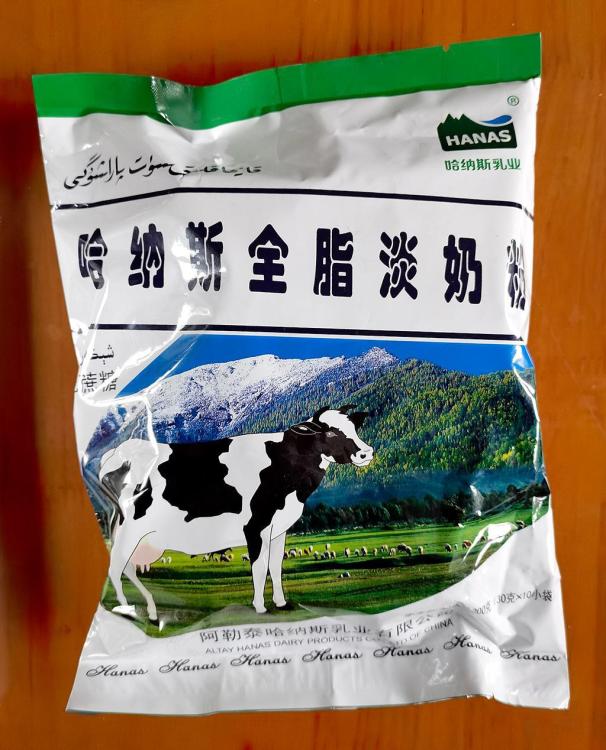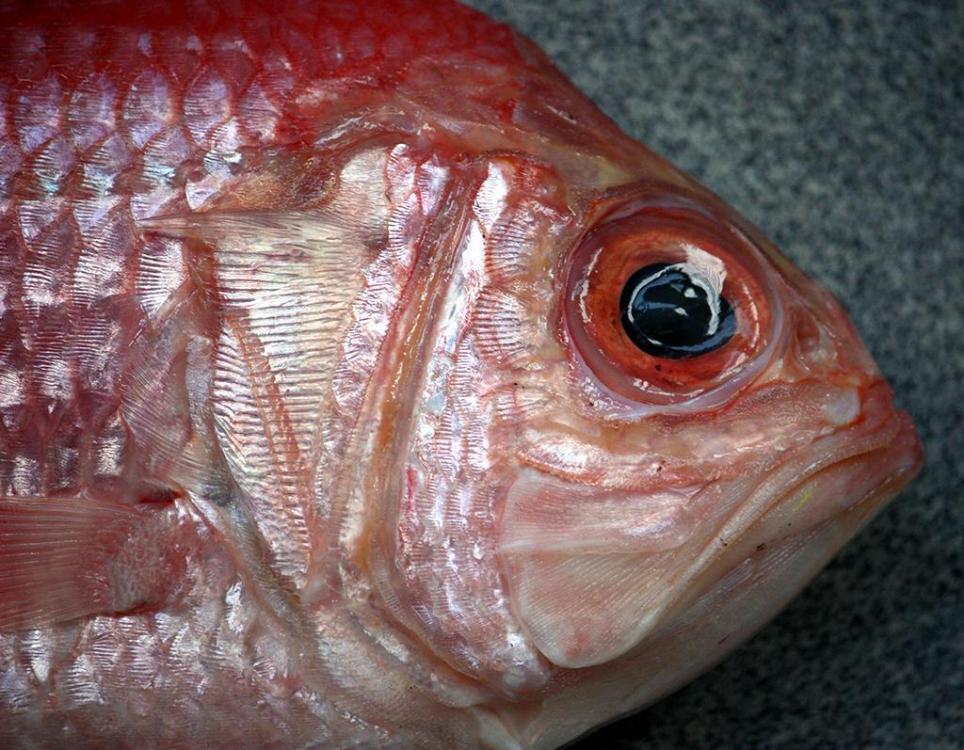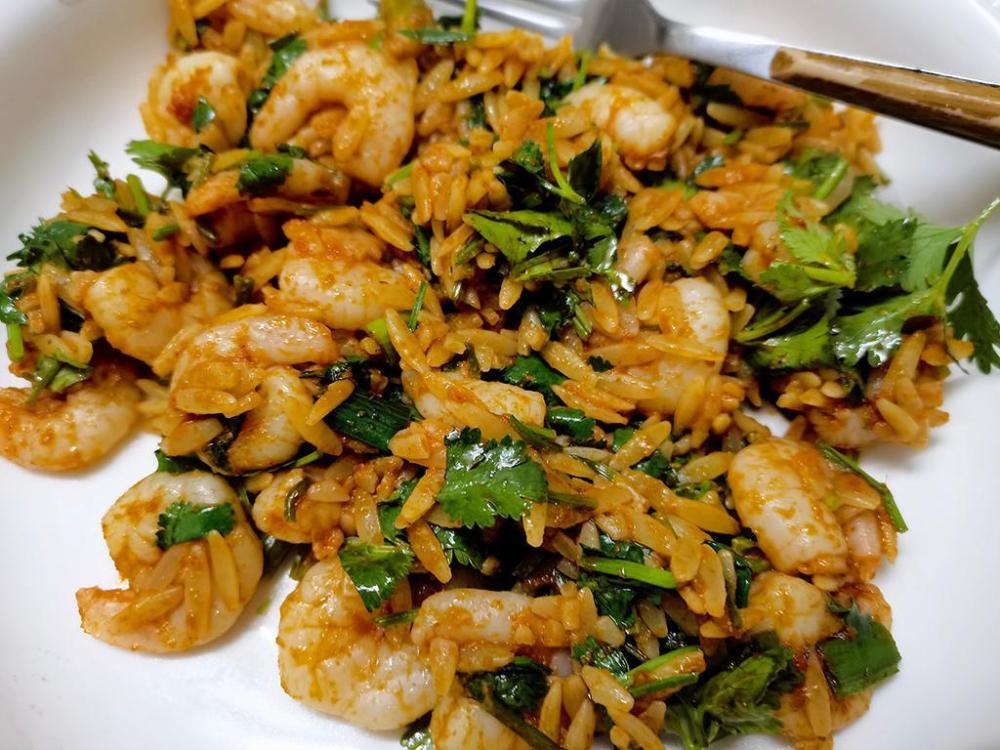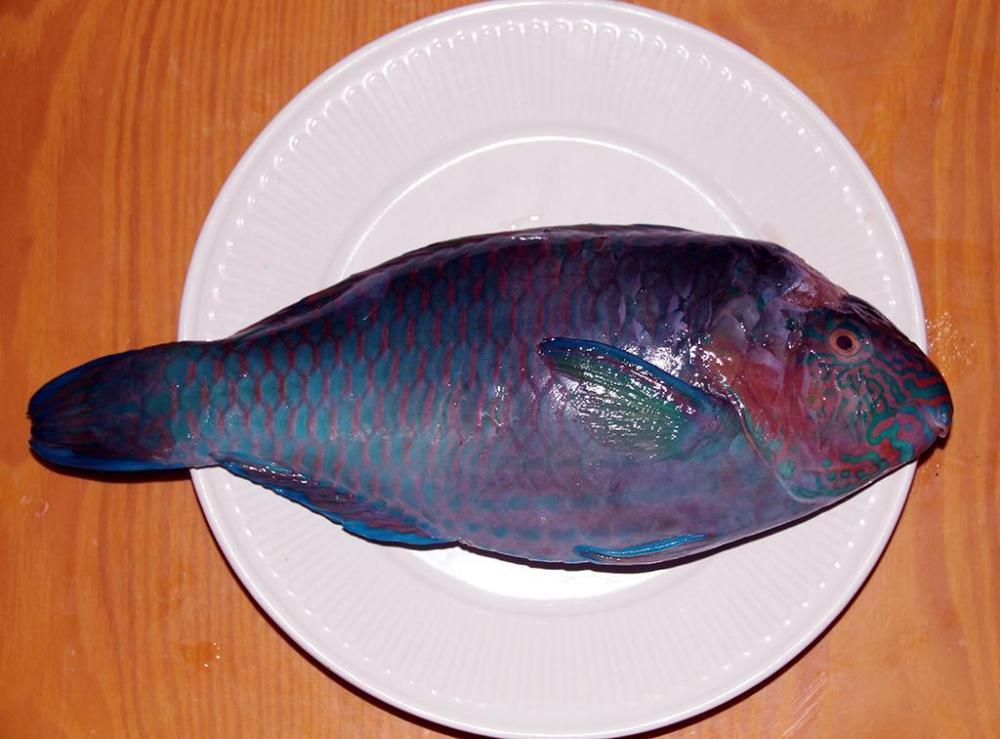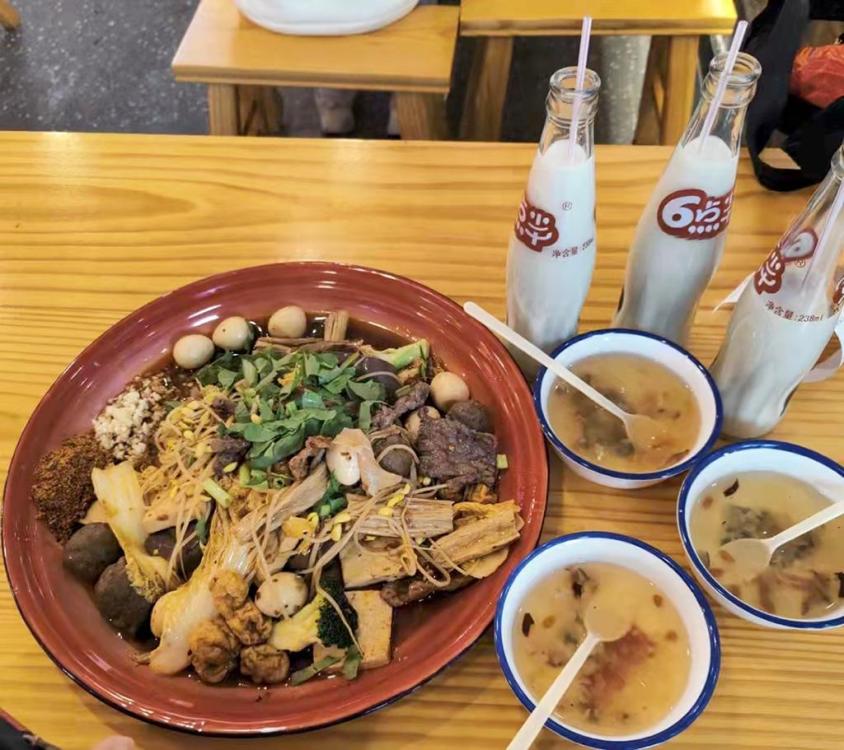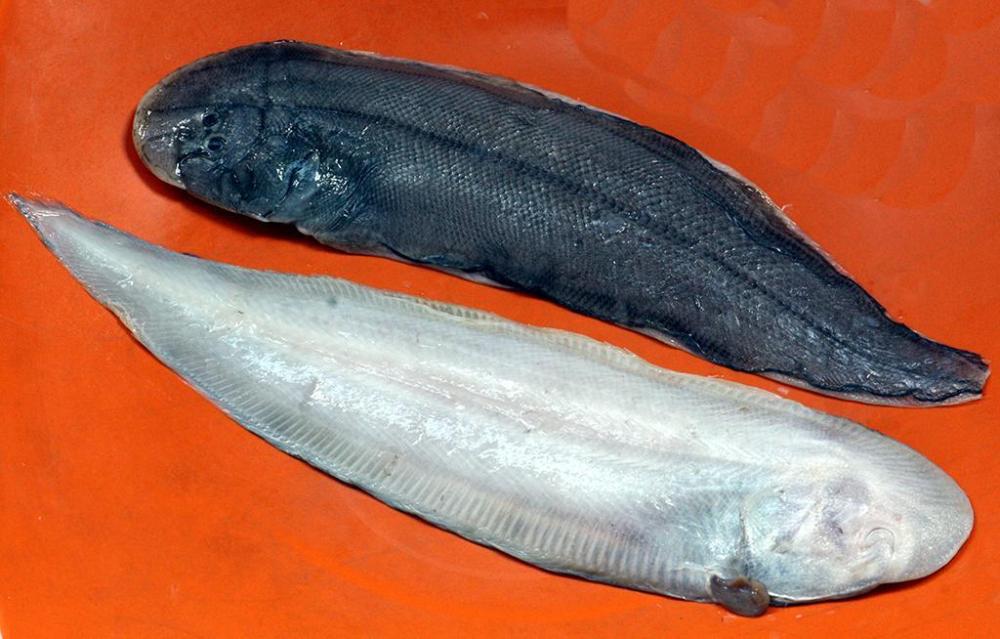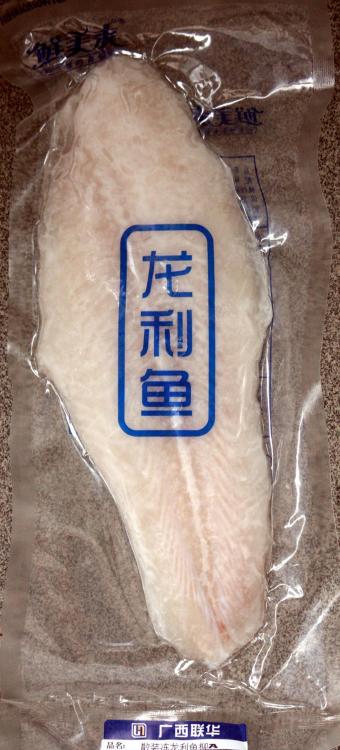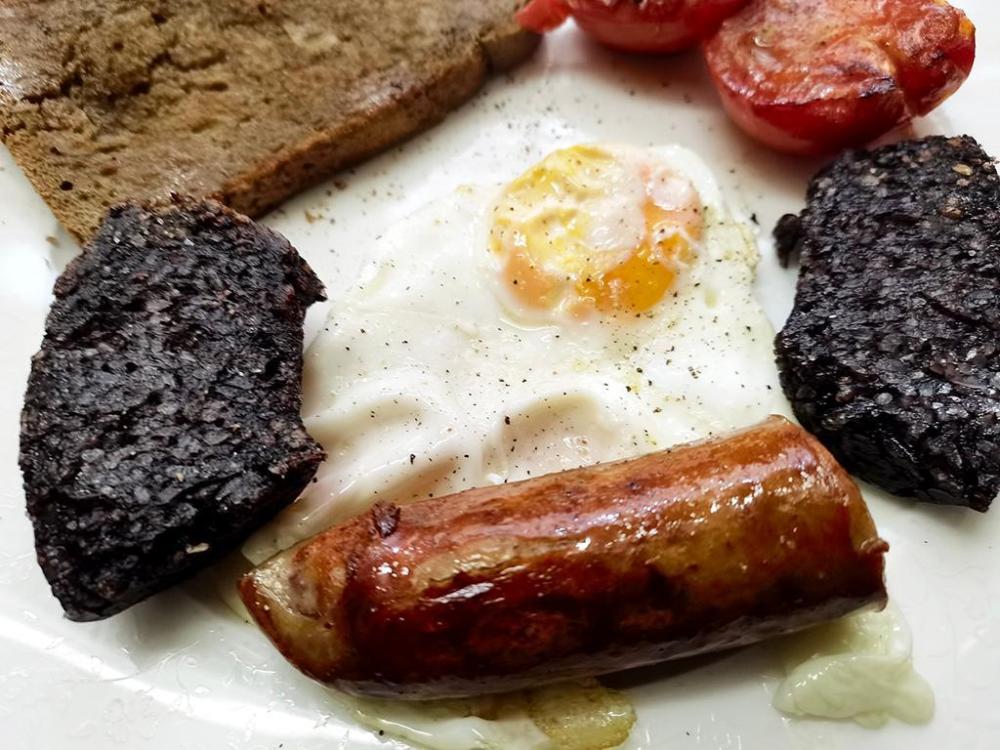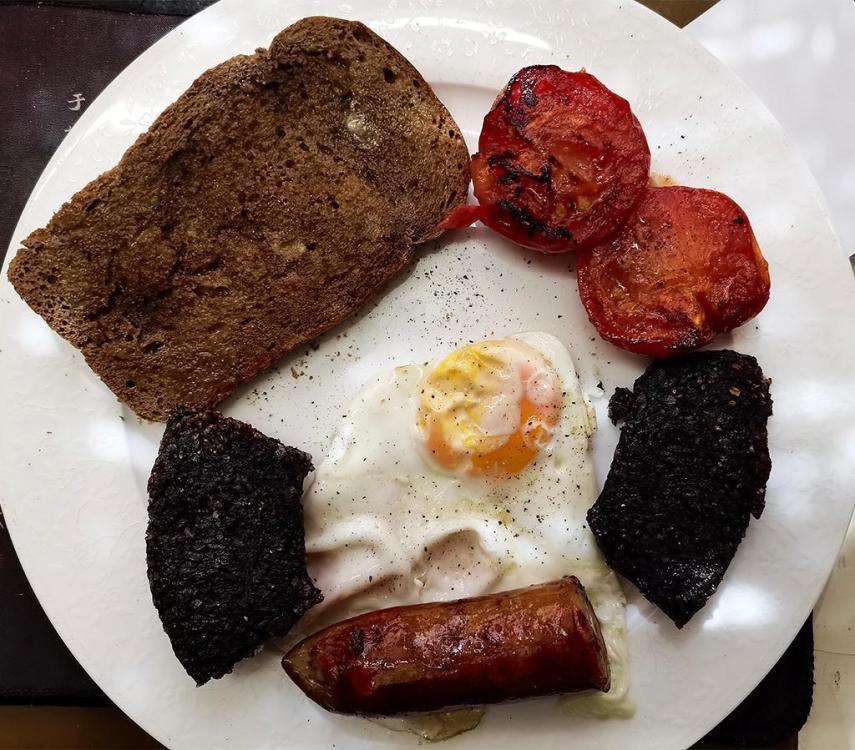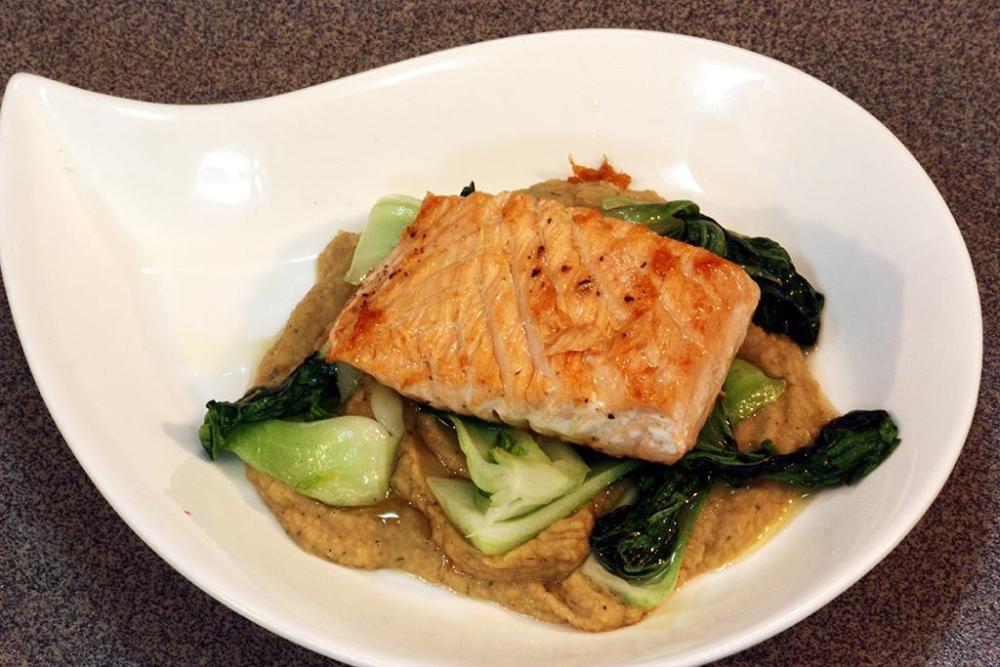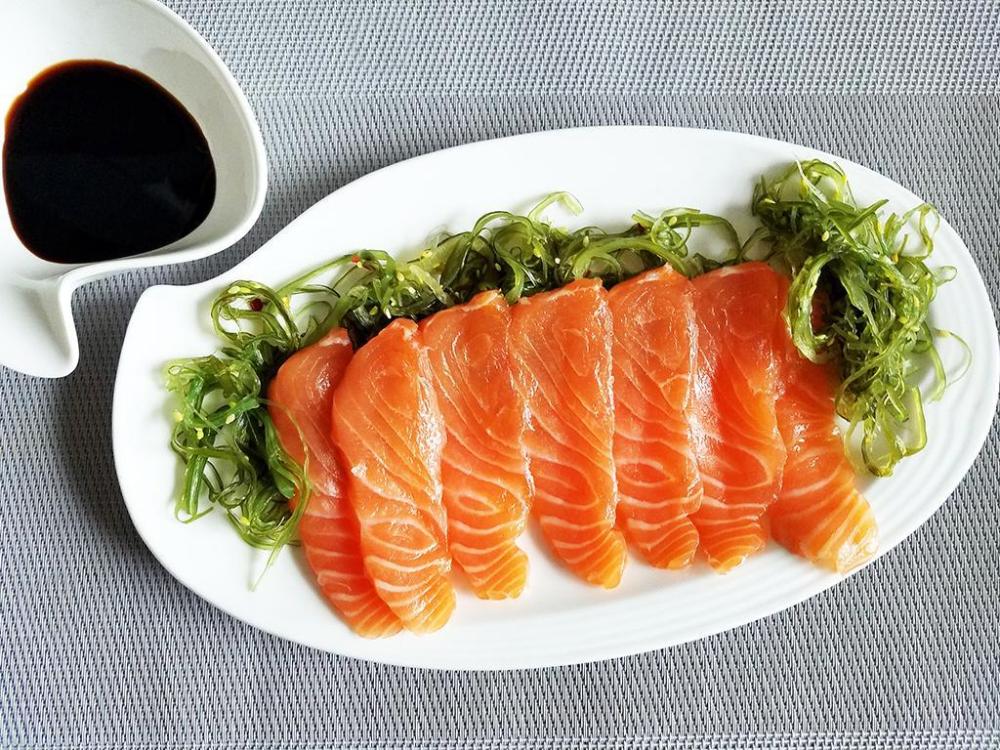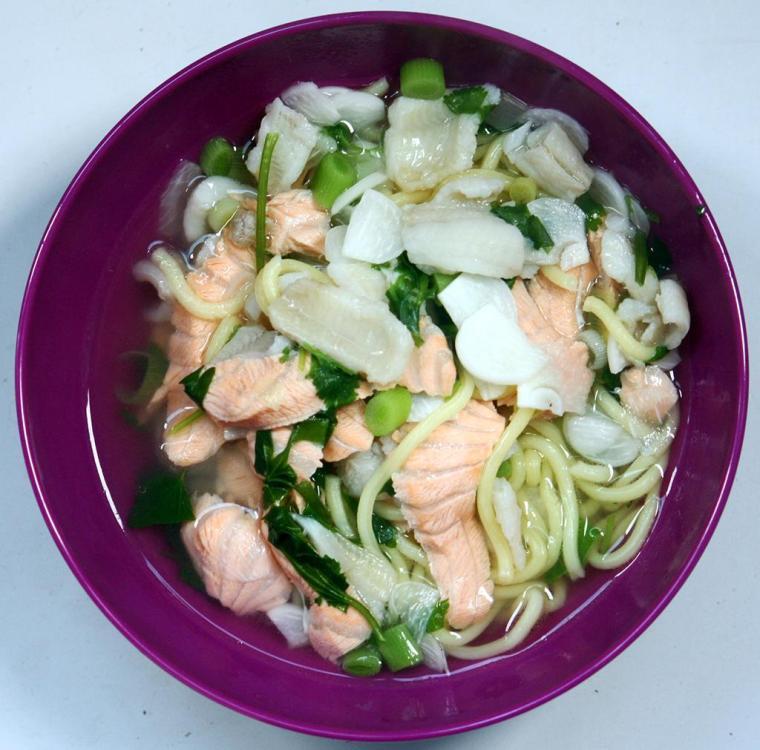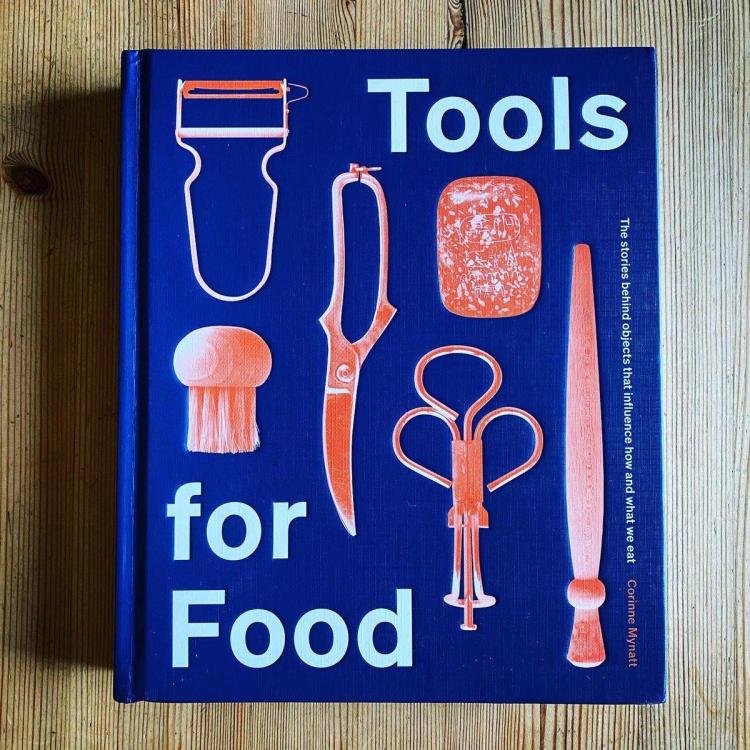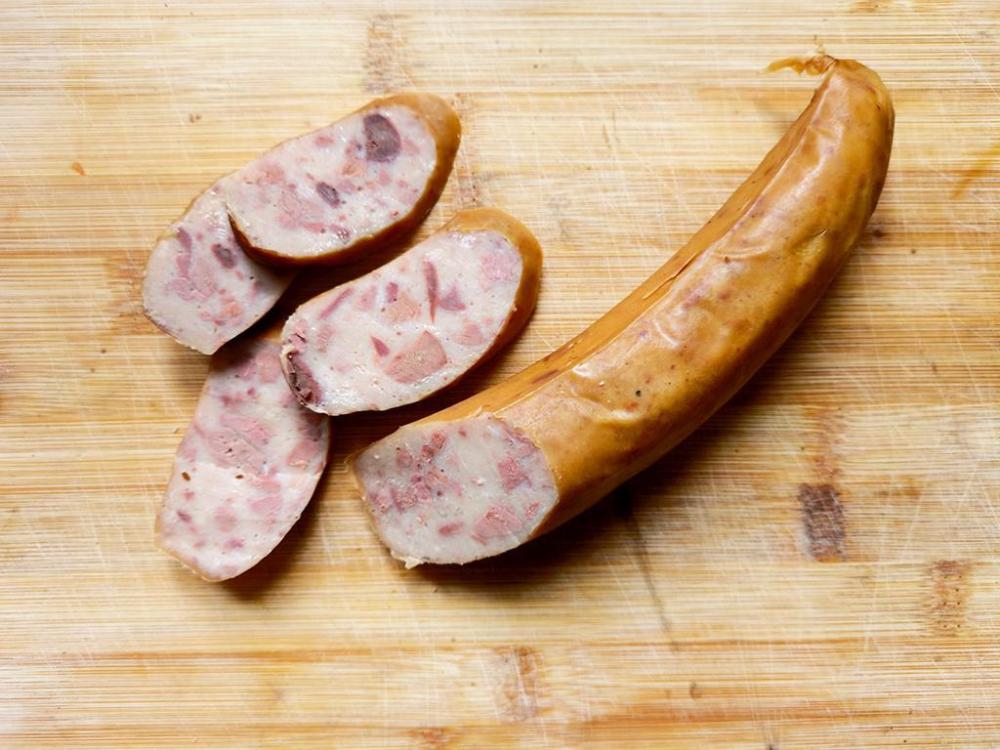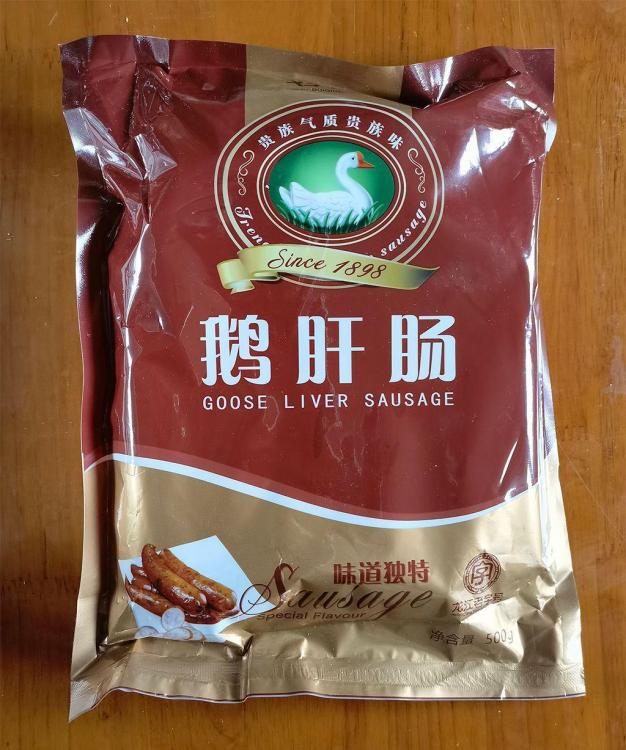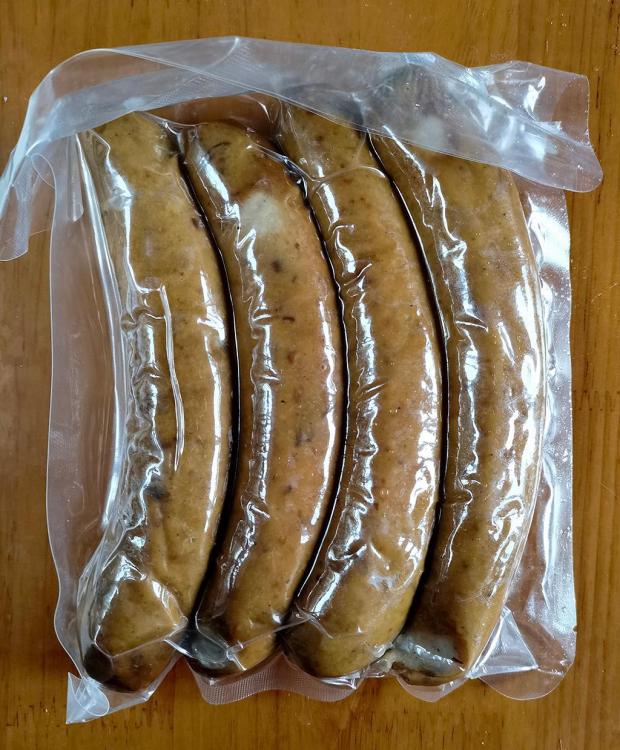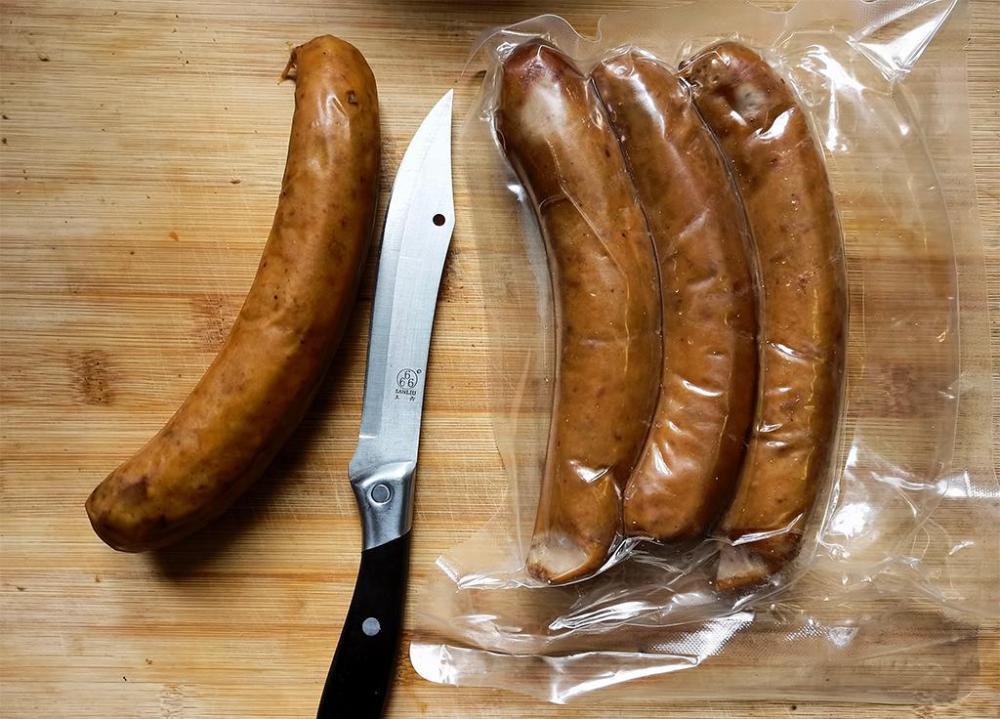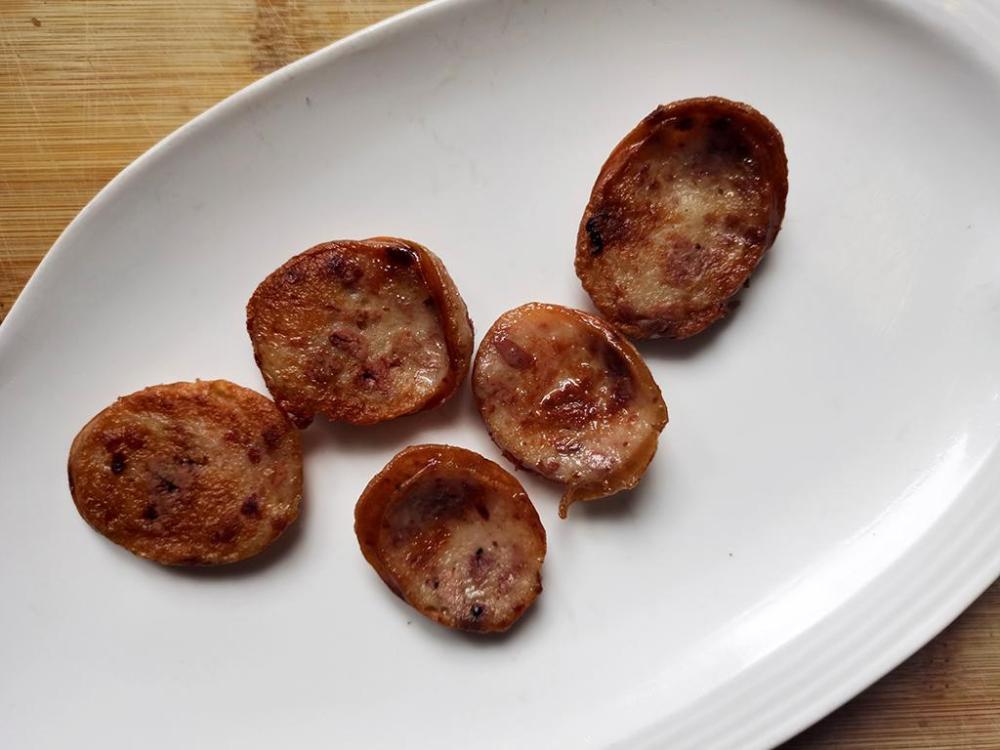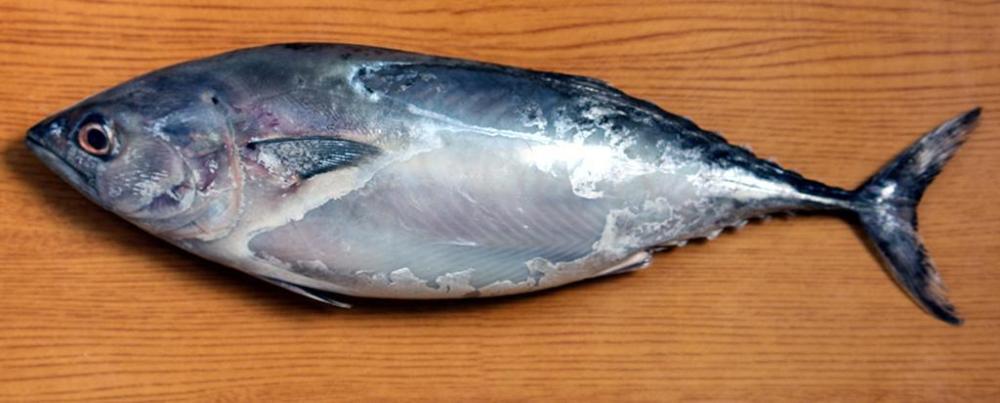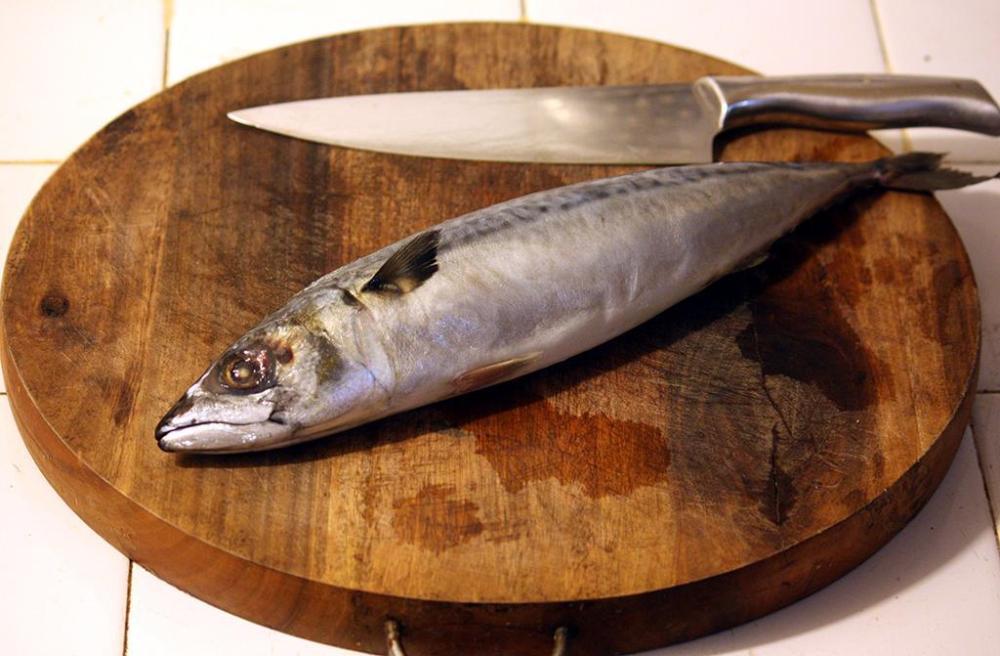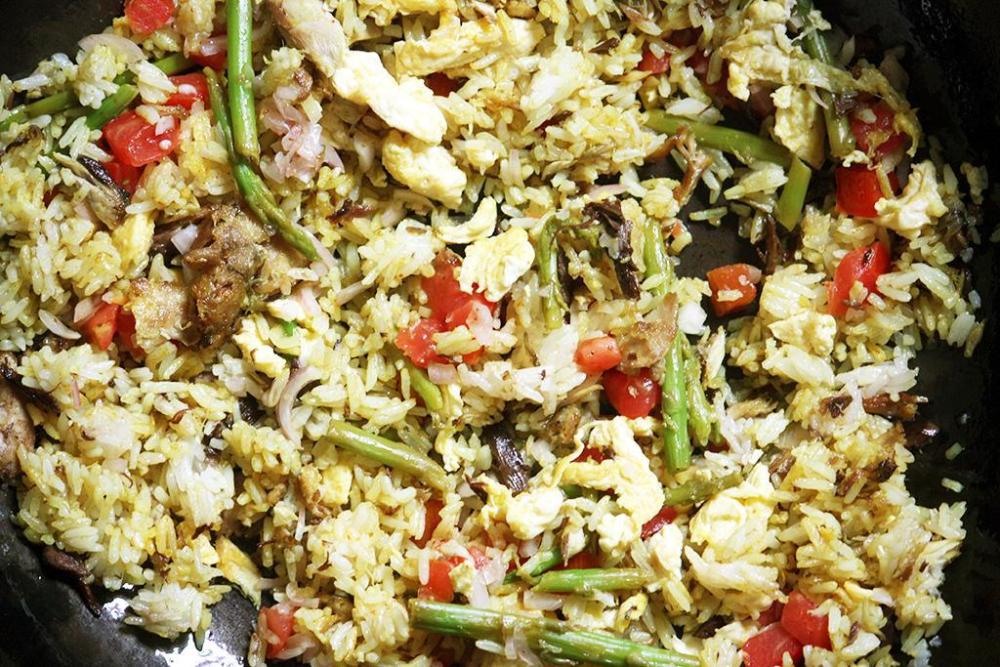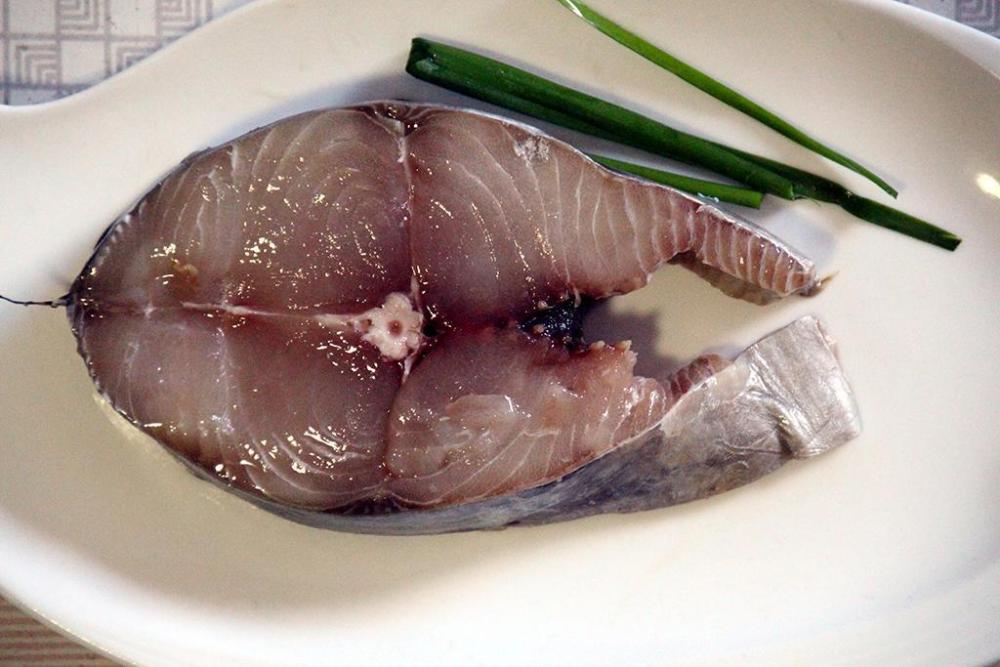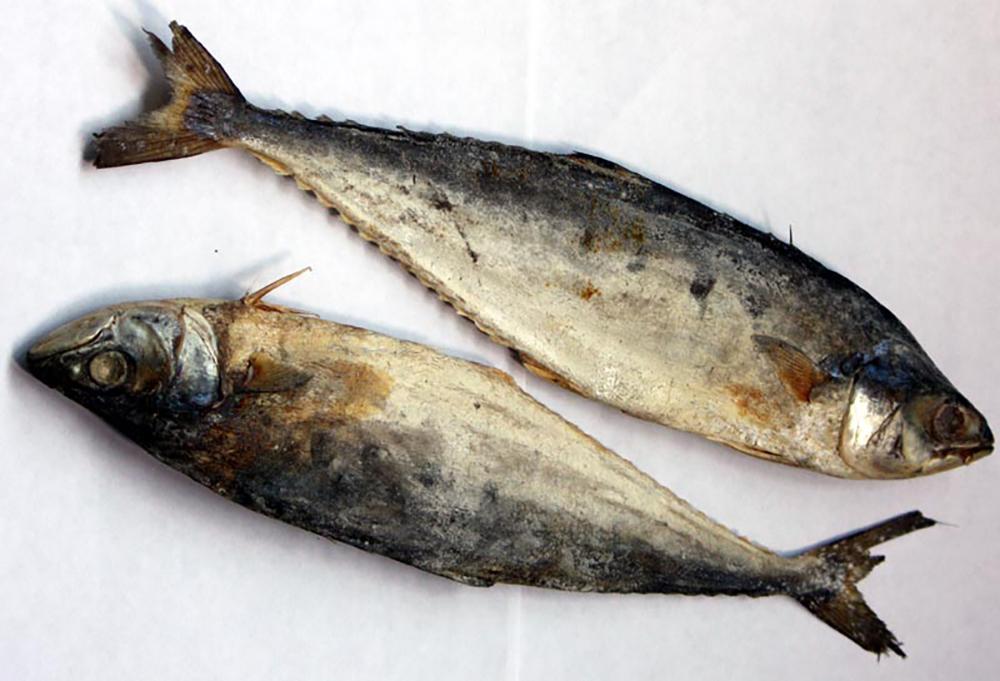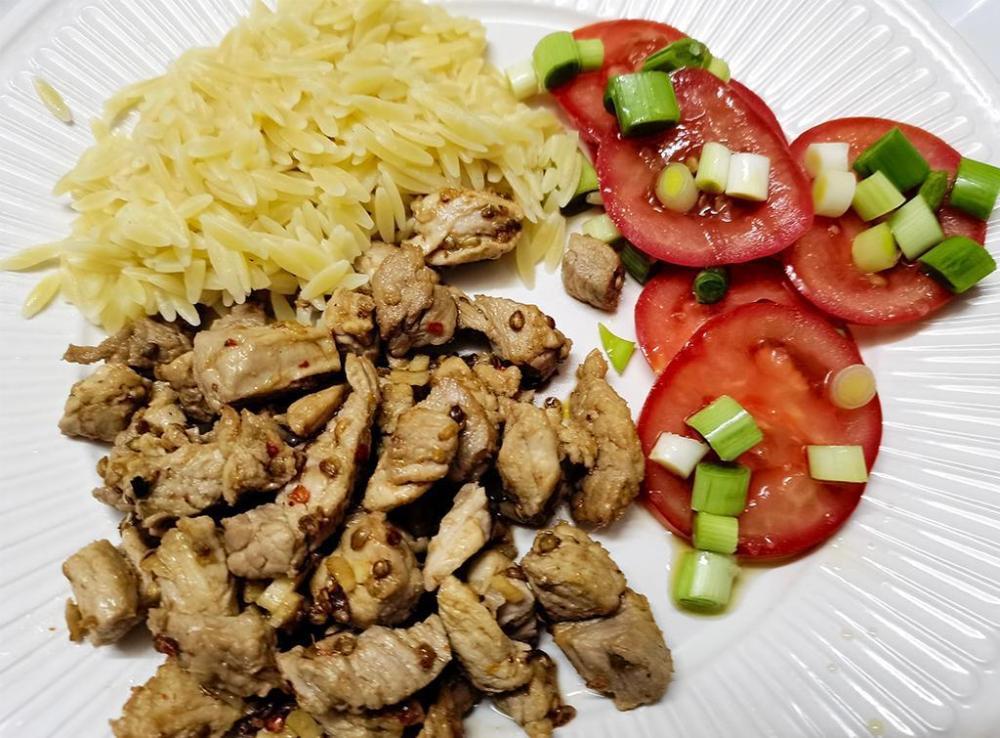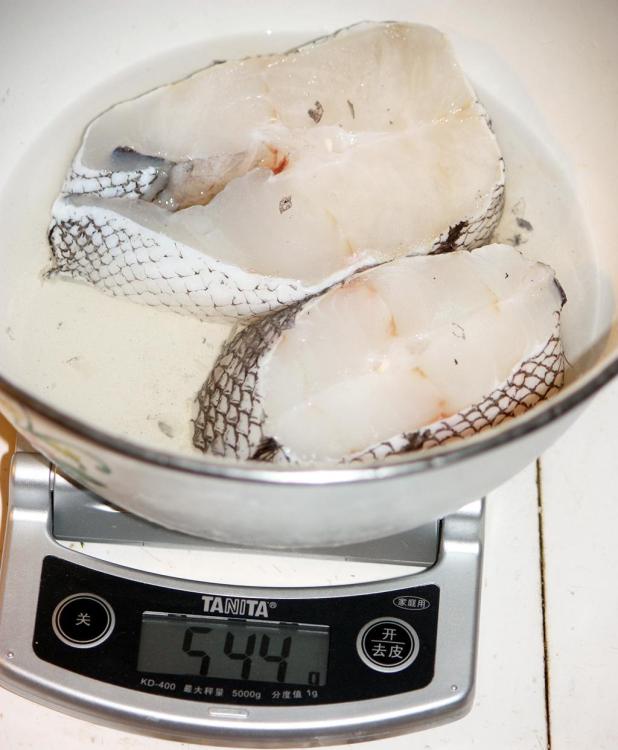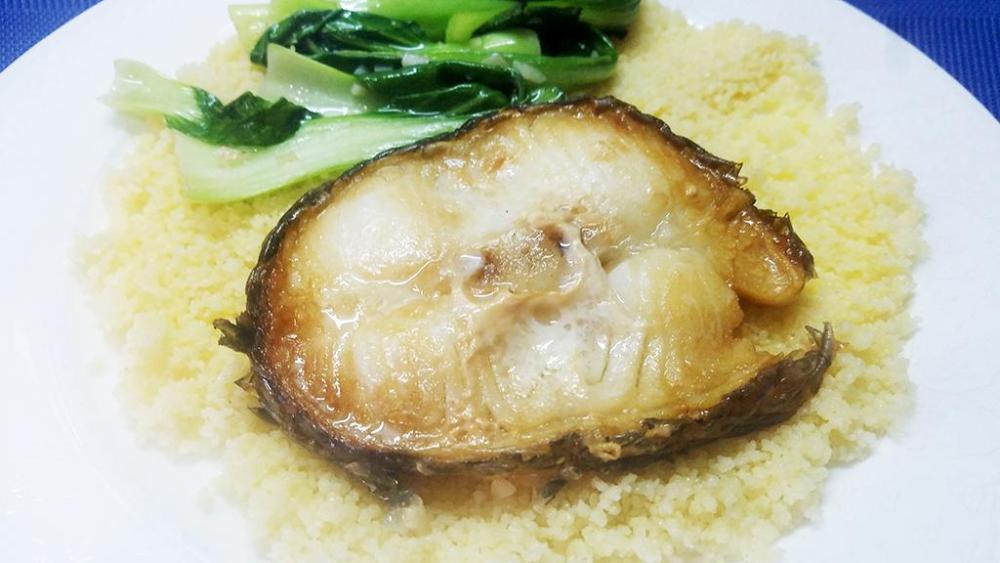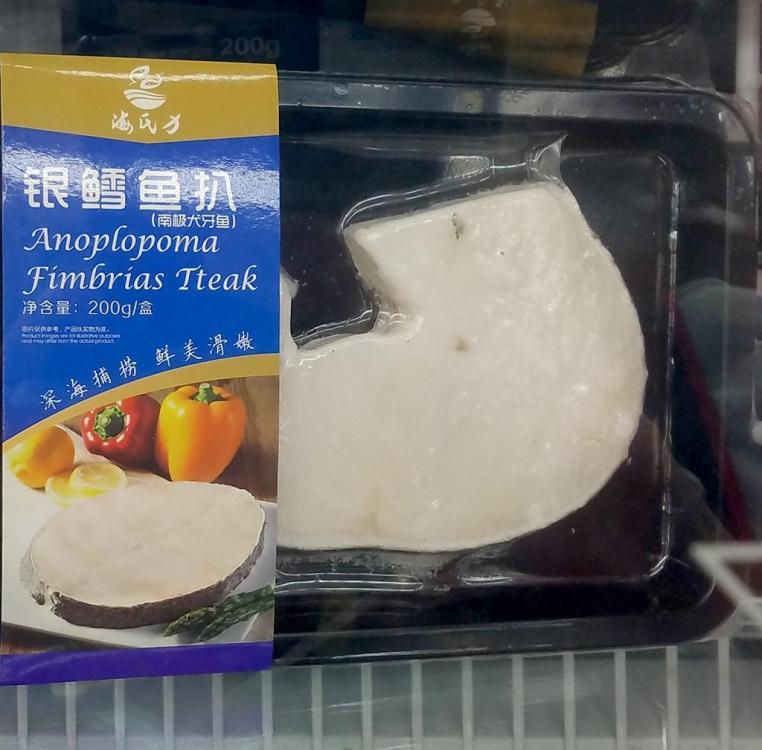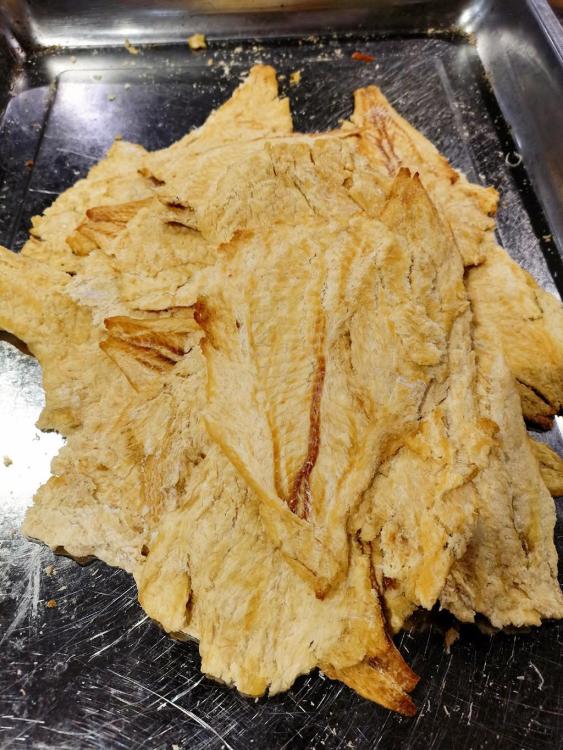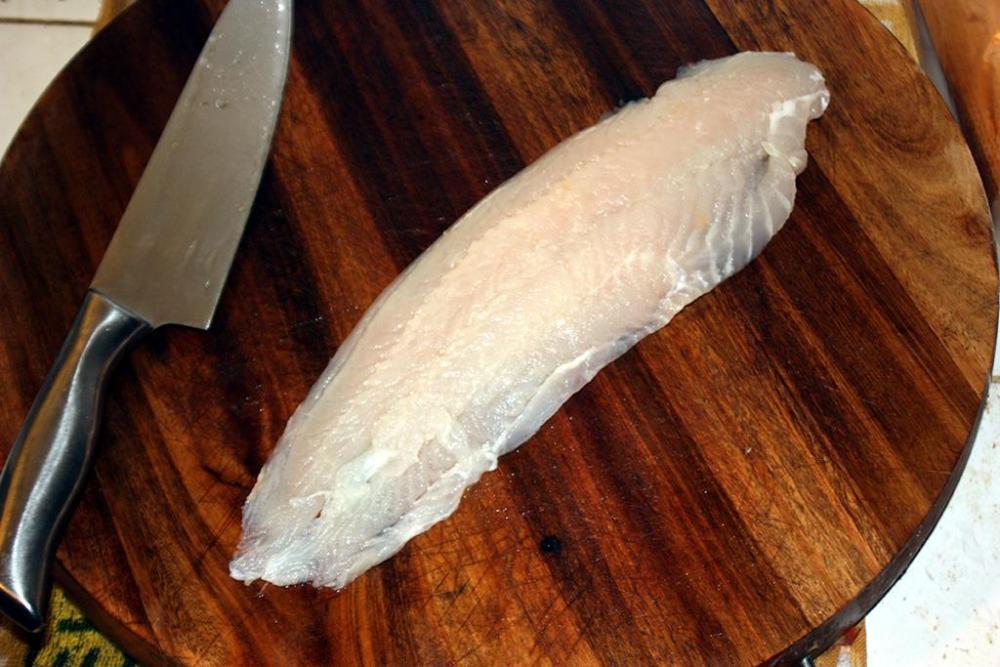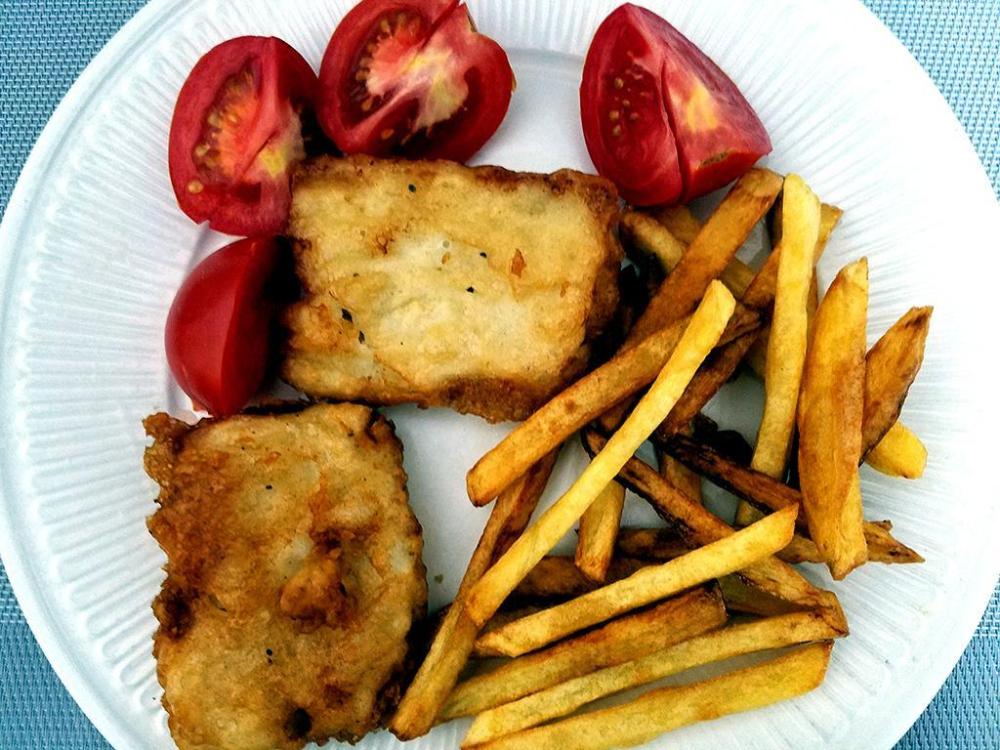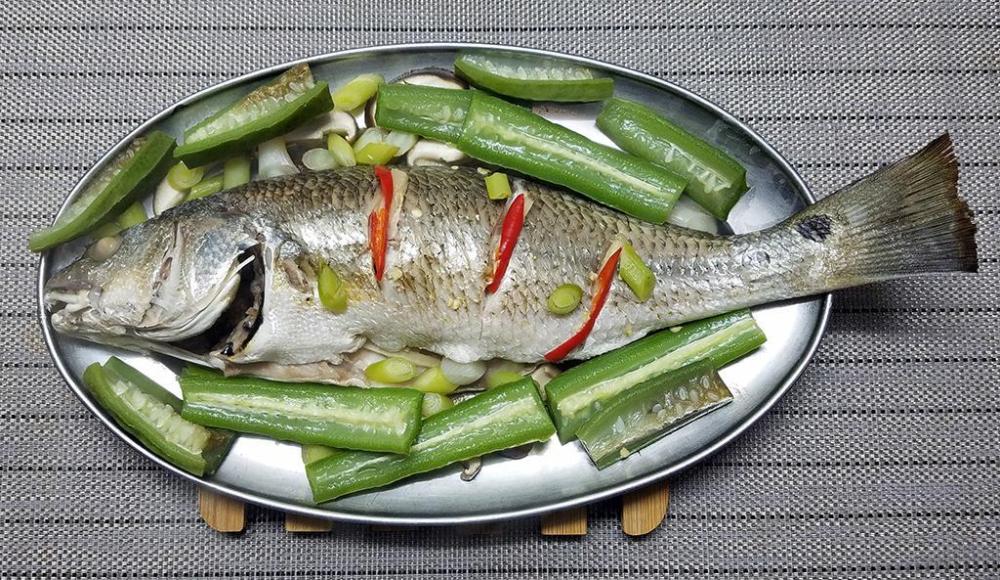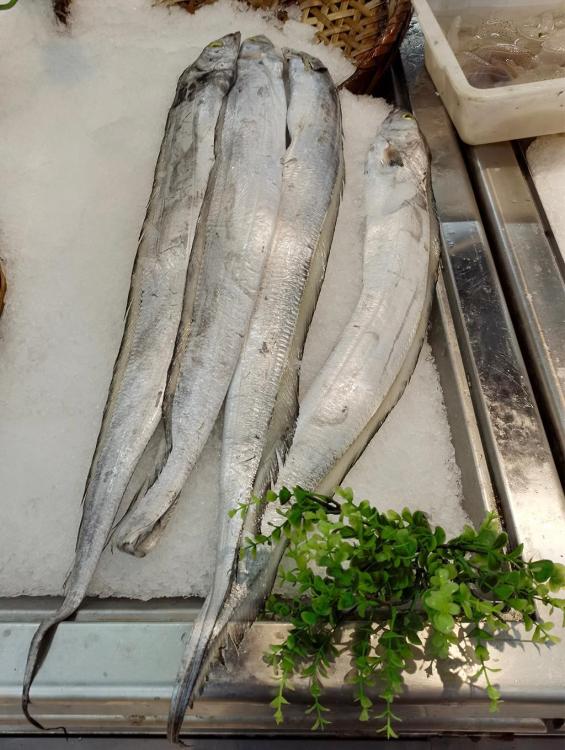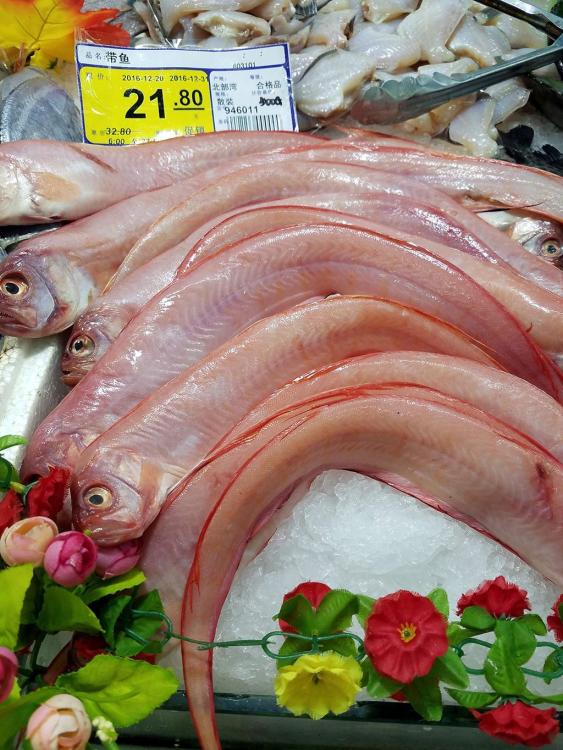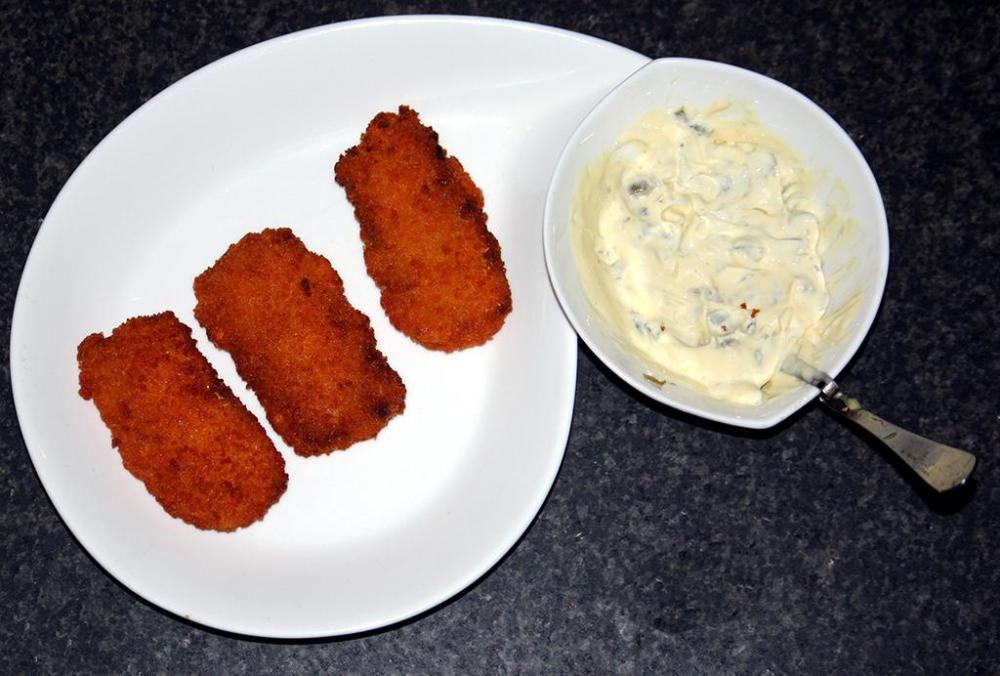-
Posts
16,662 -
Joined
-
Last visited
Content Type
Profiles
Forums
Store
Help Articles
Everything posted by liuzhou
-
Haha! This should be in the Food Funnies topic. Does that mean the other Regalis truffle products aren't 'truly natural'. Although I'm not sure how natural Spanish truffles in Californian olive oil is natural. I'm horrified to see that they do truffled popc@rn! Obviously, that's natural! And, I'd want to ask what percentage of their oil is truffle? That information is unsurprisingly missing from the Regalis website. I've seen truffle listed as low as 0.5% in other brands. Anyway, who wants truffle on a burger? Just doing me a decent burger would be a change for 99% of places.
-
I have just received this bag of milk powder from Xinjiang, China's troubled westernmost province. I know no one there. I have no idea who sent it to me. It was definitely addressed to me and my cellphone number was on the delivery note. That is not publicly available information. Mystery.
-
Despte being Scottish and a whisky lover, I wouldn't go there. What kind of whisky? Whisky sauce with venison is a winner, but I wouldn't use it for braising. Not all 'scotches' are smokey. Guinness and beef stew is an Irish classic. Yes, delicious. I often make it here. Not that particular recipe, though.
-
Everyone here, I am sure, knows the problems there are with misidentification of table fish – whether accidentally or through downright fraud . One species that this applies to more than most is the red snapper. In fact, it is often found to be tilapia masquerading as snapper in ‘Japanese’ restaurants around the world. One Canadian 2018 study reported that in Vancouver 100% of ‘red snapper’ was tilapia or rockfish. Several bet-hedging online companies here are offering something which they call “Fresh frozen snapper fillet red snapper fillet Tilapia fillet Japanese sashimi fitness ingredient snapper fillet”. It’s almost certainly plain old tilapia! Even when we are not being defrauded, it can be difficult to know exactly what a red snapper is. It isn’t one thing The term is legitimately applied to a number of different species. Those in Europe and the Americas would probably expect it to be Lutjanus campechanus, the Northern Red Snapper native to the western Atlantic and especially the Mexican gulf. New Zealand and Australia have their own varieties. What we mostly get here are 红腊鱼 (hóng là yú), Lutjanus argentimaculatus, the Mangrove Red Snapper. It is mainly a Western Pacific and Indian Ocean species, also found off China (including locally landed at Beihai, near me) and down to Australia. It is also farmed. This is also known as 红槽鱼 (hóng cáo yú), 红枣鱼等 (hóng zǎo yú) and several other names while English has even more names (and misnames) including mangrove jack, grey snapper, creek red bream, Stuart evader, dog bream, purple sea perch, red bream, red perch, red reef bream, river roman, rock barramundi etc. The real deal is a fine, sweet tasting white-fleshed fish – often steamed or braised, although it can also be fried / pan roasted.
-
Not many do. Some only eat them once!
-
This is one that isn’t very common, but does turn up from time to time. 鹦哥鱼 (yīng gē yú), Scaridae, Parrot Fish (or parrotfish). This brightly coloured fish is a member of the large Scaridae family, but that has 90 different species and I have no idea which this is. These are interesting fish. They are born female, then some of them turn male to breed and can turn back again! When they change sex, they also change colour. They consume mainly algae which they find in coral. Their powerful, hard teeth grind into the coral to extract their dinner, then they excrete sand. Huge amounts of sand. As much as 90 km worth of beach a year each. It was thought that they were harming the coral reefs, but scientists now believe the reverse as they are eating what are to the coral, parasites and their sand trails can actually form new coral reefs. WARNING Parrot fish are known to carry the ciguatera toxin, which is tasteless and cannot be destroyed by cooking. Ciguatera poisoning is seldom fatal (less than 1 in 1,000), but it is a very unpleasant survival and symptoms can linger for months. There is no known antidote. I wouldn’t eat this one.
-
麻辣香锅 (má là xiāng guō) - Hot and Numbing Savoury Pot. Not the most elegant translation, but accurate. This is a popular fast food type of dish. Sichuan flavourings. This one contains beef, duck blood, quail eggs, bean sprouts, pak choy, tofu skin, scallions, garlic, chilli, Sichuan peppercorn.
-
Sole of a Sort The salmon and sole ramen image above leads naturally me on to 龙利鱼 (lóng lì yú)*, Solea solea, Sole. By ‘sole’ I want to be referring to the common sole, aka Dover sole. American sole is a different family of fishes. But so might this be. In fact, I strongly suspect it isn’t sole at all, but Limanda aspera, Yellowfin Sole which, unlike true sole, does inhabit local waters. This is probably a good thing as the true soles have been red-listed by Greenpeace International since 2010 as the species’ survival is severely threatened. Yellowfin sole are considered sustainable. Whatever the species, it’s a rather tasteless flatfish sold, both fresh and frozen, in every supermarket. I never buy the frozen; it is usually more water than fish! I occasionally buy the fresh to bulk out fish soups etc. I have fried it dressed with oatmeal. Once. It is mostly steamed by the locals, I’m told. Frozen Sole Fillet Not a lot to say about this, I’m afraid. It’s not bad; just boring. No soul! Hopefully, something more interesting will turn up in tomorrow’s net! * The Chinese name is also sometimes given as 鳎 (tǎ), but that is only really used in zoological circles. I’ve never seen it on any fish counter or frozen product label..
-
Proper weekend breakfast Goose liver sausage, blood sausage, fried egg, fried tomatoes and buttery, toasted rye bread.
-
Norwegian salmon bought in Liuzhou Talking of Norway, I must mention this fish, semi-officially called 鲑鱼 (guī yú), but more often referred to as 三文鱼 (sān wén yú), a phonetic near rendering of the English name, Salmon. Now I hasten to note that here I am talking about Atlantic Salmon, Salmo salar. Pacific salmon don’t show up here, although recently some attempts to import Alaskan salmon have been trialled. Most salmon here comes from Norway and is farmed. Supplies were severely restricted in 2020 due to the pandemic and it didn’t help when traces of the virus were found on a salmon chopping board in a Beijing wholesale fish market, but sales are now recovering rapidly, with this years importation level surpassing previous records. In August 2021, the Norwegian Seafood Council (NSC) reported that 18,079 metric tons of fresh salmon had been shipped to China since January. In June 2021, Global Times, a Communist Party propaganda ‘newspaper’ reported that China had harvested 3,000 salmon from the first Chinese salmon fish farm. The article added that they have plans to extend from this first attempt to 300,000 fish per annum. No date was given for when this is going to happen. Salmon is still considered an expensive and exclusive variety in China and appears on few menus – most people experience it only at Japanese restaurants (nearly all of which are Chinese owned and run) or from piss-poor sushi sold in supermarkets and made from low quality fish. I can really only think of one supermarket in town that does good sashimi grade salmon. Salmon sashimi with seagrass Canned salmon is unknown but low quality smoked salmon is available online. Maybe I’m just too fussy, having been brought up on fresh wild salmon from some of the best salmon waters in the world. My brother and I were known to occasionally, ‘accidentally’ catch one or two by hand as they jumped their way upstream in the breeding season. Salmon and sole ramen So, from the lack of evidence otherwise, I’m guessing that most of the Norwegian (and less from New Zealand) stuff is sold for the sushi / sashimi trade. I’ve been through all my Chinese language recipe books, but not seen a single recipe for salmon. The internet is no help, either. Although there are Chinese language recipes, they are for western style dishes. Salmon with chickpea purée
-
The mortar is about 6 inches wide at the rim and stands about 4½ inches tall, so not huge. It weighs 5½ lbs.
-
-
As mentioned on the fun stuff topic, I bought these online and they arrived yesterday. I vaguely planned to have some for breakast, but that didn't work out so I decided to just have a small taste before comitting to a full meal. They are sold as goose liver (foie gras) sausages, although the main component is goose breast meat, with liver coming second. They come from Heilongjiang, China's northernmost province bordering Siberia, Russia. I had 500 grams / 17.64 ounces total or four fat sausages each about 18 cm / 7 inches long, took one and sliced it on a bias. Fried them up and tasted just with some blck pepper. No salt required (see ingredient list below for a formidable list of sodiums). Before I knew it, I had eaten a whole sausage (just to taste, you understand). They are rather good. Ingredients as listed - my translation: Goose breast meat, foie gras, water, starch salt, soft white sugar, spices, food additives (sodium glutamate, sodium tripolyphosphate, sodium pyrophosphate, sodium hexametaphosphate, sodium nitrite), pig casing. All good stuff!
-
Another favourite that is usually mistreated by the filleters is 鲭鱼 (qīng yú), Scomberomorus sinensis(?), (Chinese?) Mackerel. I am questioning the precise name as there are so many possibilities, mackerel not being a single species but a large number of vaguely related fish sharing certain characteristics. Being relatively near the sea, I get this one locally caught and landed at Beihai on the Tonkin Gulf, near the border with Vietnam. It is sold both fresh and flash frozen at sea. Some is dried. Salted, dried mackerel Mackerel is notorious for the rapidity of its spoiling after being caught and unless refrigerated or frozen correctly, should only be eaten on the day it’s landed. It’s still not a particularly popular fish in China, but can be found. I always buy it when I see it. But I’m guessing the lack of popularity could be linked to its reputation for rapid decay. Even Norway with a population of around 5 million eats more mackerel than China’s 1.4 billion. This doesn’t mean mackerel isn’t caught though. Chinese, Japanese and Spanish mackerel are all landed and frozen for export. It is also canned and sold like sardines, usually in a tomato sauce. Mackerel Steak When sold frozen, it is usually in the form of steaks, again cut cross-sectionally rather than laterally. I always try to get the whole fish and do the job myself. That's better! Being a naturally oily fish, it is nearly always shallow fried. I have used it happily in a version of kedgeree and even made ‘mack and chips’! I’ve ‘breaded’ fillets with oatmeal and fried it to be served with a salad. Mackerel and chips Mackerel Kedgeree I’ve never tried it, but I can’t see it working well being steamed, China’s favourite way of dealing with fish.
-
I know I've posted versions of this before, but always with a slight twist. It's my go-to comfort food. Lemon and olive oil marinated pork with coriander seeds, garlic and chilli. Served this time with orzo and a tomato and scallion salad.
-
Today is 11 - 11, the anniversary of the end of WW1, celebrated in many coutries as Remembance Day, but in China it is something very different. Two things very different. First it is "Singles Day", a recently invented celebration of being single (i.e 1 1 1 1 1), a sort of rIposte to Valentine's Day and the Chinese equivalent, both of which most Chinese couples observe. Even more recently, it has become on-line shopping day. Prices are slashed and hundreds of millions of deliveries are made today and the few days either side. My haul was nearly all food related. Pride of place goes to my new granite mortar and pestle. I have eight already, but this set took my fancy. The others included some caviar, a refill of Manchego cheese, and some Siberian goose liver sausages from Heilongjiang, China's northernmost province. The sausages are a new thing to me, but remain untested yet. Probably for breakfast tomorow. (See update).
-
Cod steaks Talking of fish and chips, my preferred fish for the dish, 鳕鱼 (xuě yú), Gadus macrocephalus, Cod was easily available until about a year ago, when it simultaneously disappeared from every supermarket. I don’t know why. I can still buy it online at silly prices and the descriptions are all hopelessly confused. Arctic cod (which isn’t really cod) from New Zealand⁈ Antarctic cod from the USA, frozen in France⁈ Cod know what it is! Also, several ads for the product advise that “Nucleic acid has been detected”. I’d be worried if it wasn’t; nucleic acid is present in all living organisms on earth. It’s in us and all our food - meat, grains and vegetables! Even when I could get real cod, I had a problem. There would be a huge hunk of whole fish (well, half a fish) parked on the fishmonger’s slab and I would indicate how much I wanted. It was always cut across the spine (as pictured above), never filleted laterally as I would, given the choice. This is how I fillet fish – laterally. Here in China only freshwater fish seem to be butchered this way. This isn’t cod, but here for illustrative purposes only; it is actually 巴沙鱼 (bā shā yú), Pangasius bocourti, Basa Fish (to which I will return). I have also found so-called ‘Black Cod’ on rare occasions. It isn’t cod, either. Actually, it is 银鳕 (yín xuě), Anoplopoma fimbria, sablefish. Interestingly, the Chinese literally means ‘silver fish’. No mention of black. 'Black cod' with ponzu. Dried and salted cod are both available as is imported* cod liver oil as a food supplement for babies. It is high in vitamin D, which is effective in reducing the incidence of rickets. I remember it well from when it was dispensed free of charge to all children in the UK – none of whom liked it. The 1960’s revolution wasn’t only fuelled by marijuana; cod liver oil played a part too! Dried Cod Cod and Chips * from Australia
-
Returning to this topic to bring you some video links. All over China, Sichuan style hotpot is popular and food companies have not been slow to react. Most supermarkets now offer kits of Sichuan hotpot base for the home cook. Here are four videos showing how this concoction is made, the spices that go into it and how to use it in the home. It wouldn't surprise me if some of the less conscientious retaurants use it too. Enjoy. https://twitter.com/i/status/1457223008674713604 https://twitter.com/i/status/1457503958780420097 https://twitter.com/i/status/1457674230095495171 https://twitter.com/i/status/1457679594216050689
-
This is a common variety here, despite being native to the west Atlantic. 白龙鱼, Sciaenops ocellatus, Red Drum, aka 'redfish' or 'spotted tail bass' is farmed around China’s eastern and southern coastlines. The fish (which is not red)) is recognisable by its black spots; there is always at least one, most often two but occasionally up to three per side. The one pictured was 33 cm /13 inches long and weighed 111 grams / 4 oz. It is a difficult fish to scale and clean. Those large scales can go flying all over the place if you are not careful. I usually fill a large sink with water and descale the fish underwater. It still takes a lot of effort though. The gills and belly contents are equally resistant to removal and cleaning them involves the use of a pair of pliers. Filleting them requires care too, as the flesh is rather delicate. Here they are nearly always steamed whole with aromatics, but I have also fried the fillets after flouring them lightly. They can also be poached and I have used them occasionally for fish and chips. Steamed Red Drum
-
I have a recipe which uses a ginger syrup in a salad dressing served with squid, but as it only uses 2 tbs at a time, it might not make much of a dent in your 2.8 litres.
-
Chances are everyone will know 带鱼 (dài yú), Trichiurus lepturus, Belt Fish, although the names you use may differ. I’m going with ‘belt fish’ as it’s the one I know best and it is a direct translation of the Chinese name. It is also known as ‘largehead hairtail’, ‘ribbon fish’ ‘atlantic cutlassfish’ or ‘pacific cutlassfish’, among other names. These long, thin fish grow up to 2.34 metres / 7 ft 8 inches, although most are around 500 cm – 1 metre / 1 ft 8 in – 3 ft 3 in. I understand those caught in Australian waters may be longer. Those in the image above were just under 60 cm / two feet. Distinctly blue tinged when alive, the colour quickly fades post mortem to become a silvery grey. They are native to many seas around the world, although there is argument about whether they are all precisely the same species. They all taste the same, and that’s all that matters here. Their value as food means that they are one of the world’s top ten most commercially landed species. Most supermarkets sell these whole as well as cut into approximately 10 cm / 4 in pieces. These segments are also often sold after being flash frozen at sea. Segmented Belt FIsh The popular, sweet tasting fish is easy to de-bone and can be fried or braised and is often prepared in 红烧 (hóng shāo) style, a term that is often translated as ‘red-cooked’ and is simply braising in soy sauce. Breaded Belt Fish fried and served with home made tartar sauce. There is also a mysterious red-fleshed version, no mention of which I can find anywhere. But I have a photo! Red Belt Fish? May be a dfferent species.





